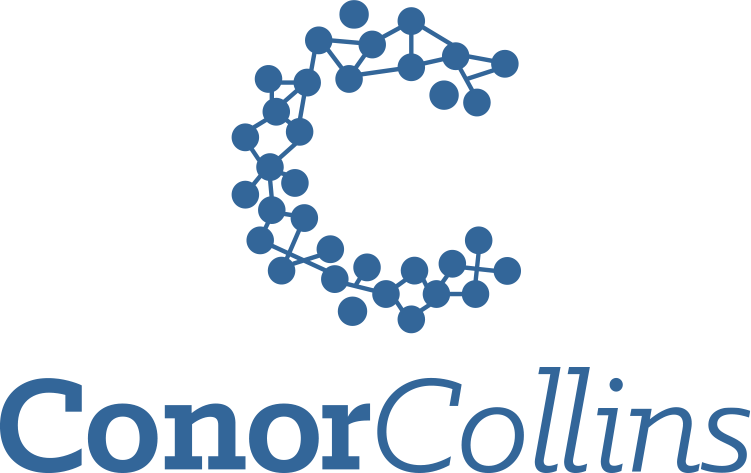Frozen shoulder. Did you shudder as well? When I see it on an intake form I know I’m always in for a challenging case.
Early in my career I had a lady with a diagnosis of frozen shoulder come into my office. She had seen many other practitioners, without resolve, and was seeing me as a last resort. After one treatment her symptoms went away and did not return. I thought at the time that I was the frozen shoulder guru. I was going to help all of the frozen shoulders on planet earth (that was naive). It turns out that helping someone with frozen shoulder is about as difficult as finding an Elsa doll the day before Christmas.
Frozen shoulder is a painful, stiff shoulder and can be divided into two categories; primary frozen shoulder and secondary frozen shoulder. Primary frozen shoulder is a stiff, painful shoulder, without any specific trauma or disease. Secondary frozen shoulder is described when stiffness is thought to have been caused by underlying trauma, infection, inflammation or disease2. An increased prevalence of frozen shoulder has been seen in those individuals with diabetes5 and thyroid dysfunction6. This condition affects 2-5% of the population8, is more common in men9 and is observed most commonly between 40-60 years of age10. Frozen shoulder is often described in 3 stages: freezing (8 weeks – 3 months), frozen (16 weeks – 1 year) and thawing (16 weeks – 3 years)3. Often these stages can overlap making it difficult to understand where a person is at during their journey. While clinicians struggle to often agree on inclusion criteria and accurate diagnosis, several authors have defined frozen shoulder as a pathology by the presence of inflammatory mediators (interleukins, cytokines, B- and T-lymphocytes, growth factors, matrix metalloproteinases, tumor necrosis factors and fibroblast activation markers) as well as a change in local collagen structure of the shoulder capsule11.
There are several commonly accepted treatment strategies for frozen shoulder . It should be noted that due to the level and quality of evidence available, superiority of one treatment over another cannot be concluded3.
Pain relief, advice, and education
Pain relief may come by way of exercise, manual therapy or medications. Medications most commonly used are both steroidal and non-steroidal anti-inflammatory medications. Medications are often suggested at night to improve sleep quality1. An integral part of education is also understanding the potential central mechanisms which may present in longer-standing shoulder pain14. Furthermore, the often self-limiting nature of frozen shoulder can have a profound effect on a person’s ability to cope with normal daily activities3.
Physical therapy, activity, exercise
This is often used alongside medications or injection therapy. Activities are typically based around pain relief/modulation, regaining/maintaining motion and strengthening. While most programs are discussed as person-specific, there has been suggestion of avoiding passive range of motion of the shoulder during the freezing stage1.
Intra-articular (IA) injections
Corticosteroid injections are often use in attempt to break the pain and inflammation cycle. Research may suggest that doses of less than 10mg may be less effective at managing pain12. It also appears that single injections often yield similar outcomes to multiple IA injections13.
Manipulation under anesthesia
The capsule of the shoulder is forcibly broken under general anesthesia by manoeuvring the shoulder across its restricted range of motion2.
Arthroscopic capsular release
Surgical release of the shoulder capture with the goal of restoring range of motion and reducing pain3. It should be noted that less than 10% of people require surgical interventions for frozen shoulder1. Of those that receive surgery, 17% of patients fail to maintain range of motion and between 5-10% of procedures are consider unsuccessful (having made no significant improvements in clinical outcomes)15,16.
Hydrodilation
In the early stage of injury, saline along with anesthesia is injected into the shoulder capsule. The premise of the procedure is an attempt to break the early fibrotic cycle of inflammation within the shoulder. Hydrodilation while often discussed, is not currently standard practice in the management of frozen shoulder1.
My perspective
I don’t know how else to put this but it’s very difficult to help people with frozen shoulder. What I’ve found has helped me over the years is as follows:
First, I don’t make promises. This is generally true for most things I see, but particularly for frozen shoulder. I don’t know when it well get better. I don’t know what will improve first. I will also clarify there are no magic pill treatments. Frozen shoulder appears to be one of those things that many practitioners have the “secret” to and will market themselves that way. Unfortunately, there is no secret, it’s simply a complicated condition that takes an unpredictable amount of time to resolve.
Second, I tell people to try to stay active with the arm by their side. The arm by side position is one of my favourites when people are scared, or too sore, to move the shoulder. Most people can carry some weight with the arm by their side (farmers or suitcase carries). It may be uncomfortable at times, but it is often manageable. If people are have difficultly walking with a weight, they can stand and hold a weight for repetitions. This allows you to continue to work in a way that may be meaningful for the person you are helping.
Third, as the therapist do your best to stay grounded in the face of your client’s hard feelings. You have to meet people where they are at because you have no other choice. If a person is having a bad day, shifting treatment away from the shoulder may be the best thing. Helping a person relax and feel good, may indirectly reduce the person’s discomfort that day. Sometimes the best treatment for the shoulder may be a low back massage.
Fourth, cardiovascular exercise and/or lower body exercise should always be used when possible. I think we can often forget about the positive systemic effects of exercise. Whether it’s cardiovascular training or lower body resistance training, the body will release adrenaline and neurotransmitters which may reduce sensations of pain.
Fifth, you can only control what you can control. Try and work on things that improve general health parameters. Diet, sleep, exercise and stress when made a priority often yield positive results over time. In circumstances where they do not directly affect frozen shoulder, they may still positively impact other aspects of life.
Sixth, consider co-managing frozen shoulder with a physician. This is what I usually do. Frozen shoulder can be incredibly painful. It is fairly frequent that the person I am seeing will be compliant with all my clinical advice, and they will still have no change in symptoms or pain. At times medications or procedures are needed. To have someone already in that care funnel is beneficial. It’s also great to have the opinion of a trusted physician, or therapist, to work alongside you.
While frozen shoulder is a very frustrating thing to experience the good news is there is often light at the end of the tunnel, no matter how long. The vast majority of people make a full recovery. As with most things, doing nothing is seldom the answer. Start slow, establish trust and try and move a little bit more in a better direction each day.
References
1. Pandey V, Chidambaram R, Modi A, Babhulkar A, Pardiwala DN et al. Trends in Practice Among Shoulder Specialists in the Management of Frozen Shoulder: A Consensus Survey. Orthop J Sports Med 2022;10(10):23259671221118834. doi: 10.1177/23259671221118834.
2. Pandey V, Madi S. Clinical Guidelines in the Management of Frozen Shoulder: An Update! Indian J Orthop 2021;1;55(2):299-309. doi: 10.1007/s43465-021-00351-3.
3. Willmore EG, Millar NL, van der Windt D. Post-surgical physiotherapy in frozen shoulder: A review. Shoulder Elbow 2022;14(4):438-451. doi: 10.1177/1758573220965870.
4. Yen Lin Lee D, Haas R, Wallis JA, O’Connor DA, Buchbinder R. Clinical practice guidelines for the management of atraumatic shoulder conditions: protocol for a systematic review. BMJ Open 2021;7;11(4):e048297. doi: 10.1136/bmjopen-2020-048297.
5. Zreik NH, Malik RA & Charalambous CP. Adhesive capsulitis of the shoulder and diabetes: A meta-analysis of prevalence. Muscles Ligaments Tendons J 2016;6(1), 26–34. doi: 10.11138/mltj/2016.6.1.026.
6. Schiefer, M., Teixeira, P. F. S., Fontenelle, C., Carminatti, T., Santos, D. A., Righi, L. D., et al. (2017). Prevalence of hypothyroidism in patients with frozen shoulder. J Shoulder Elbow Surg 2017;26(1), 49–55. doi: 10.1016/j.jse.2016.04.026.
7. Buchbinder, R., & Green, S. Effect of arthrographic shoulder joint distension with saline and corticosteroid for adhesive capsulitis. Br J of Sports Med 2004;38(4), 384–385. doi: 10.1136/bjsm.2004.013532.
8. Walker-Bone K, Palmer KT, Reading I, Coggon D, Cooper C. Prevalence and impact of musculoskeletal disorders of the upper limb in the general population. Arthritis Rheum 2004;51(4), 642–651. doi: 10.1002/art.20535.
9. Hand C, Clipsham K, Rees JL, Carr AJ. Long-term outcome of frozen shoulder. J Shoulder and Elbow Surg 2008;17(2), 231–236. doi: 10.1016/j.jse.2007.05.009.
10. Kingston K, Curry EJ, Galvin JW, Li X. Shoulder adhesive capsulitis: Epidemiology and predictors of surgery. J Shoulder and Elbow Surg 2018;27(8), 1437–1443. doi: 10.1016/j.jse.2018.04.004.
11. Cho CH, Song KS, Kim BS, Kim DH, Lho YM. Biological aspect of pathophysiology for frozen shoulder. BioMed Res I 2018;7274517. doi: 10.1155/2018/7274517.
12. Kim KH, Park, JW, Kim SJ. High- vs low-dose corticosteroid injection in the treatment of adhesive capsulitis with severe pain: A randomized controlled double-blind study. Pain Med 2018;19(4), 735–741. doi: 10.1093/pm/pnx227.
13. Erickson BJ, Shishani Y, Bishop ME, Romeo AA, Gobezie R. Adhesive capsulitis: Demographics and predictive factors for success following steroid injections and surgical intervention. Arthrosc Sports Med Rehabil 2019;1(1), e35–e40. doi: 10.1016/j.asmr.2019.07.005.
14. Sanchis MN, Lluch E, Nijs J, et al. The role of central sensitization in shoulder pain: a systematic literature review. Semin Arthritis Rheum 2015; 44: 710–716. doi: 10.1016/j.semarthrit.2014.11.002.
15. Kwaees TA and Charalambous CP. Rates of surgery for frozen shoulder: an experience in England. Muscles Ligaments Tendons J 2015; 5: 276–279. doi: 10.11138/mltj/2015.5.4.276.
16. Smith CD, Hamer P and Bunker TD. Arthroscopic capsular release for idiopathic frozen shoulder with intra- articular injection and a controlled manipulation. Ann R Coll Surg Engl 2014; 96: 55–60. doi: 10.1308/003588414X13824511650452.
About the Author
Conor’s Sports Injury Therapy background has earned him a growing reputation in the professional sports industry. Conor has consulted for athletes in the NHL, NCAA and IHHF and he was a therapist at the 2015 Pan AM games in Toronto.
When he’s not at the clinic, Conor’s teaching at Mohawk College in the Massage Therapy program or teaching his course “Understanding the Complexity of Concussion” internationally. Conor has written for a variety of magazine and news outlets, as well as participated as an expert at a number of internationally-recognized conferences.



Recent Comments